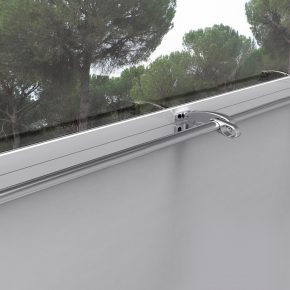
Strand: Natural ventilation is a breath of fresh air
Want to breathe new life into a stuffy indoor space with cost-effective natural ventilation? The answer could be to keep things simple, according to Strand Hardware, which recommends two key steps to assess requirements and identify the right solution.
Step one requires a bigger picture view: its essential to consider the building’s conditions and orientation – its size, location, positioning and wider environment. This will indicate wind velocity and direction which is needed to optimise air flow and exhaust emissions from inside the premises.
Knowing how the building is to be used, its construction and internal layout (including partitions, doors and chimneys) is also vital, along with window sizing, location, fabric and an understanding of how they function.
Budget is a primary consideration but the beauty of natural ventilation is that it can be achieved without breaking the bank. Manual systems offer the ultimate cost-effective option. Unlike integrated powered systems, they require little by way of capital investment. They are also easier to use and maintain.
Step two of the assessment requires specifics: sufficient detail to identify the products and quantities needed
– the number of windows requiring openers
– window material: aluminium, timber or PVC-U construction
– the window configuration: top/hung, side/hung, bottom hung opening in or out
– window opening width and height.
– window location from finished floor level
Craig Fox, Sales Director for Strand Hardware, says manual solutions offer a cost effective way of operating windows to provide natural ventilation for new build or existing buildings.

“Strand‘s Duoflex range is frequently installed in workplaces, offices, hospitals and educational establishments which benefit from natural ventilation,” he comments.
“Providing a system that is safe and easy-to-use is essential. Health and safety requirements should be considered so that if windows are at a height, people will not be tempted to over-reach or stand on a chair in order to access them.”
Other products may be used to optimise the solution. Building orientation and its levels of sun, shade and wind direction will determine if they are needed.
For example, buildings with double aspects, a large run of windows or large glazed panels, may benefit from reflective film or blinds to prevent the ‘greenhouse effect’.
While those within a densely built environments, such as town centres with tall buildings, or premises with fewer opening windows, may require electrically driven operators, fans/filters to improve air flow and quality.
In just two simple steps, you can say goodbye to stuffy air and hello to comfort and well-being. Get ready to take a deep breath and transform your space into the ultimate sanctuary of freshness and vitality.
For more information visit www.strandhardware.co.uk/
Visit Supplier's page
Latest news

28th March 2025
Ideal Heating Commercial announces 10-year warranty on Evomax 2 boiler
Evomax 2, the UK’s number one selling commercial wall-mounted boiler from Ideal Heating Commercial, is now available with a 10-year warranty.
Posted in Articles, Building Industry News, Building Products & Structures, Building Regulations & Accreditations, Building Services, Facility Management & Building Services, Heating Systems, Controls and Management, Heating, Ventilation and Air Conditioning - HVAC, Innovations & New Products, Pipes, Pipes & Fittings, Plumbing, Retrofit & Renovation, Sustainability & Energy Efficiency, Videos
28th March 2025
FLIR Si1-LD Acoustic Imaging Camera for Compressed Air Leak Detection
FLIR, a Teledyne Technologies company, introduces the Si1-LD, an industrial acoustic imaging camera that brings faster and more accurate compressed air leak detection to those operating on a modest condition monitoring budget.
Posted in Acoustics, Noise & Vibration Control, Articles, Building Industry News, Building Products & Structures, Building Services, Facility Management & Building Services, Information Technology, Innovations & New Products, Retrofit & Renovation, Sustainability & Energy Efficiency, Thermal Imaging and Monitors
28th March 2025
LIFTEX 2025 Seminar programme announced
Registration has opened for LIFTEX 2025. Now in its 37th year, LIFTEX 2025 is the UK’s only dedicated exhibition for the lift, escalator and access industry and takes place only once every three years.
Posted in Access Control & Door Entry Systems, Accessibility, Articles, Building Industry Events, Building Industry News, Building Products & Structures, Building Regulations & Accreditations, Building Services, Exhibitions and Conferences, Facility Management & Building Services, Health & Safety, Retrofit & Renovation, Security and Fire Protection, Seminars
28th March 2025
MCRMA welcomes ArcelorMittal UK to membership
A UK division of the global steelmaking business ArcelorMittal has become the latest new member of the MCRMA, the industry association representing the metal building envelope sector.
Posted in Articles, Building Associations & Institutes, Building Industry News, Building Products & Structures, Building Systems, Cladding, Facades, Posts, Restoration & Refurbishment, Retrofit & Renovation, Roofs, Steel and Structural Frames, Walls
 Sign up:
Sign up: